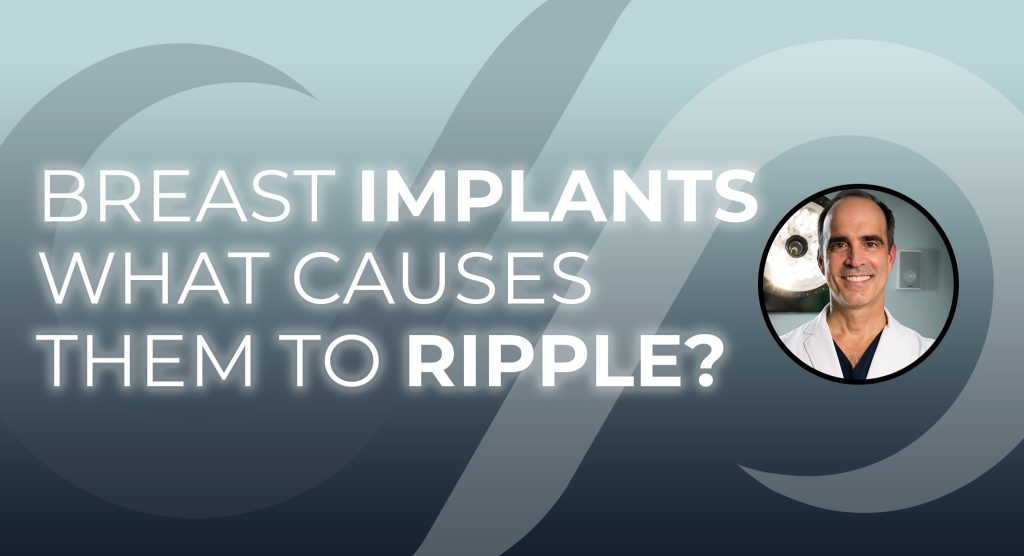Hi, I’m Dr David Stoker board-certified plastic surgeon in Los Angeles. A question I practice frequently receives, What causes breast implants to Ripple? That’s a really good question, and it comes down to either the implant or the patient’s body. The implants are not solid. A solid implant is something we might use on a male pectoral implant. If you did that on a female, the problem is you’re going to feel like a dude, and that’s very unpopular in my practice. So, it’s either saline or silicone gel implants. A saline implant is more liquidy and tends to ripple a lot more than silicone gel implants of the silicon gel variety. The more cohesive or, the more like a Gummy Bear the implants are, the less they’re going to ripple, so the ideal balance to minimize rippling is to have a highly cohesive silicone gel implant that is thick and viscous like a young, firm breast but not hard and firm like male bodybuilder’s pectoralis Majors might be.
The second part of that question is about the patient’s body. Suppose there’s a thin amount of coverage over the implant. In that case, you tend to see the implant more because all breast implants ripple some if you have thin coverage, such as a very skinny person with no breast tissue with an implant placed on top of the muscle that’s going to be high risk for seeing ripples. On the other hand, if you have a lot of breast tissue or a layer of fat covering the implant and you put it underneath the pectoralis major muscle, it’s much less likely that you’ll see any rippling. If you’d like more information on the topic of what causes a breast implant to ripple, check out my website Drstoker.com. We’ve got a ton of information I wrote myself on there and ten thousand beautiful before and after pictures for you to review.


Leave a Reply